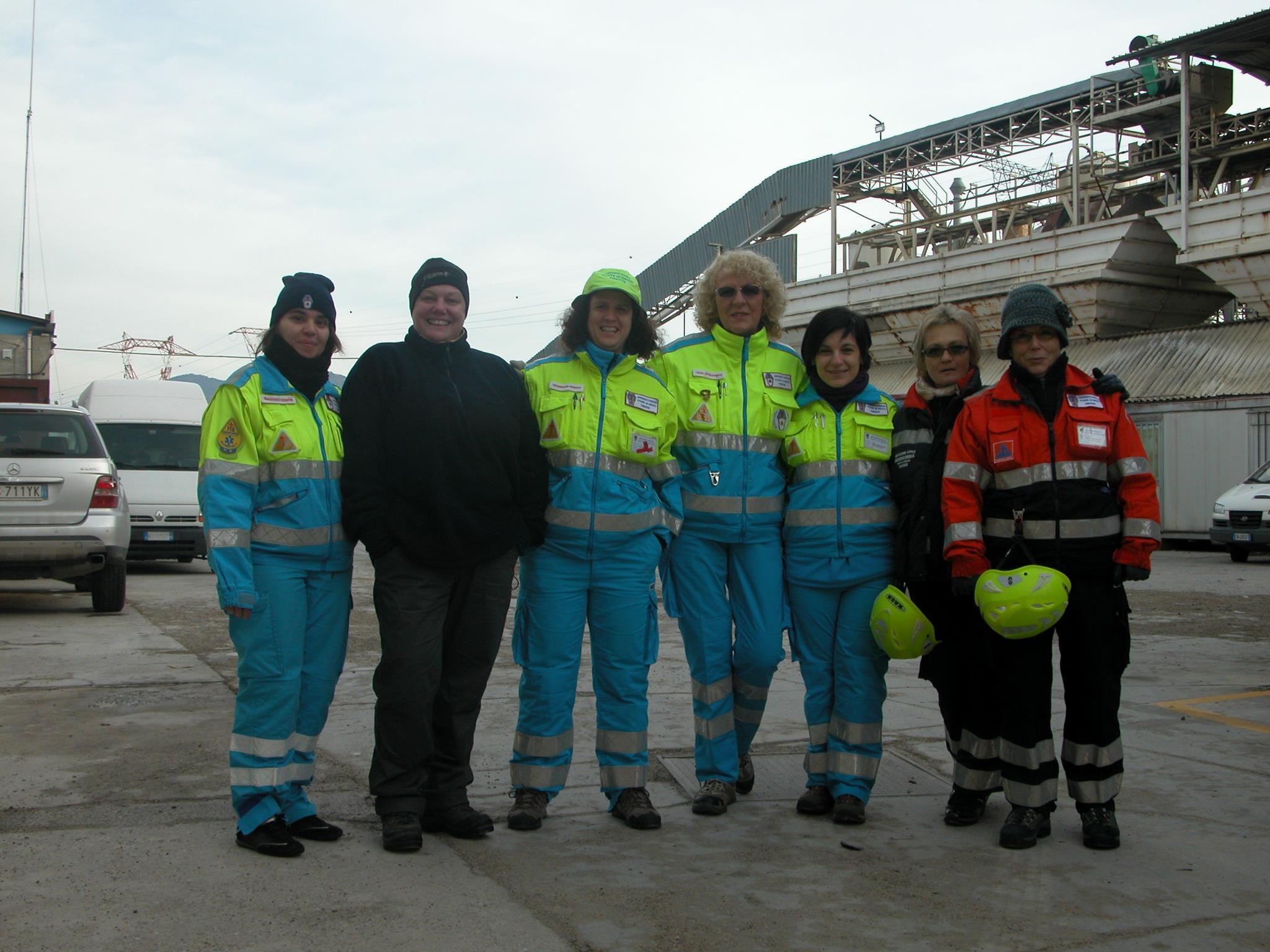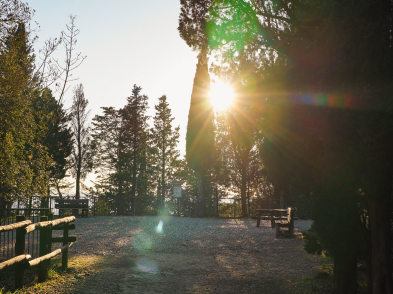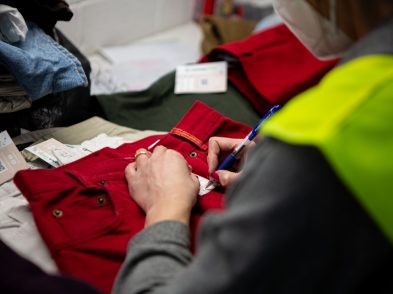The robing of the Misericordia’s first Jewish confraternity member on September 25 has sparked debate and controversy within this Catholic association. While the Misericordia di Ponte di Mezzo has admitted Nina Peci as a sister, detractors from other branches claim that her robing breaks with centuries of tradition.

Nina Peci rocking a fluorescent jumpsuit while serving for the Misericordia, with colleagues (2011 – Photo Antonio Montelatici on Facebook)
The Misericordia is a Catholic confraternity, or lay association, that has been assisting the sick in Florence since the middle of the thirteenth century. When Florentines call 118, they say they are calling the Misericordia, even though there are two other, secular ambulance associations active in Tuscany: Humanitas and the Red Cross.
‘I have always dedicated time to volunteer projects, but until now it’s always resulted in the advancement of my career,’ says Nina Peci, a graphic designer who is a board member of the Tuscan-American Association and co-founder of its professional women’s committee. ‘Seeing people rush to help in major disasters is inspiring, however my lifestyle doesn’t allow me to join them. But, I told myself “You can do something to help your community and give back directly to the area in which you live.’ “
Peci’s first contact with the Misericordia happened by chance. As her company’s safety representative, she is required to renew her first aid certificate every two years. The first available free first aid course happened to be at the Ponte di Mezzo branch of the Misericordia, right near her home. She found the class interesting and stimulating, so when the teacher asked if any students were interested in continuing on to the next level of training, in preparation to be an ambulance volunteer, Peci raised her hand.
‘At the first class, I meet individually with aspiring volunteers,’ explains Antonio Montelatici, governor of the Misericordia of Ponte di Mezzo, which counts 320 members. New volunteers must sign a form declaring their adherence to certain Misericordia rules, amongst which is being a baptized Catholic. ‘Nina expressed her desire to help, and pointed to the cross in the room saying “Jesus was one of us.” I told her I would have to consult with the board of directors and the spiritual advisor before making a decision,’ he said. The seven board members and parish priest agreed that it was appropriate to admit a member of the Jewish faith ‘because they are our religious cousins,’ as long as she respects the statutes, rules and Catholic identity of the organization.
Peci successfully passed the course, and in the past year and a half she has provided about 500 hours of ambulance service. She says she doesn’t think actions are ever purely altruistic; she says one gains a sense of perspective by entering, just for a few minutes, into other peoples’ lives. What Peci ‘gains’ is perfectly in line with the Catholic sense of anonymous charity upon which the Misericordia is founded. But her good actions recently became controversial when she participated in the ceremonial robing that made her a confraternity member.
The statutes of the Misericordia of Ponte di Mezzo dictate that one must accept the robe within two years or leave the association. The ceremony, which technically does not have to take place in church, involves an oath and being dressed in the historic outfit that the Misericordia members used to wear when working until recent safety laws imposed a fluorescent jumpsuit. The now-ceremonial outfit has three elements: the long tunic means brotherhood and equality, the hood means anonymity, and the rosary means faith. Clearly, Peci could not be given a rosary, nor swear in church to follow Jesus, but the first two elements of the ritual could be applied to her. In the year leading up to the ceremony, Montelatici consulted with the Jewish community and together they established an appropriate ritual to accept her into the association. A Jewish community board member, Mario Fineschi, robed her. As a full sister of the Misericordia, Peci has both rights and obligations. Montelatici believes that it would be unfair to accept the helping hand of non-Catholic volunteers but consider them sub-level members of the association, unable to vote in assemblies.
However, not everyone in the Misericordia community agrees with the decision made at Ponte di Mezzo. On the association’s official forum, a letter of protest from Francesco Papi of Prato has sparked heated debate. For Papi, Peci’s acceptance is ‘the kiss of death for the soul of the Misericordia.’ He accuses Peci of ulterior motives and Ponte di Mezzo of sensationalism just to have one more member. His line of thinking is taken up by other contributors who essentially argue that in this brotherhood of equals, one has to be Catholic. Others support Peci’s admission, both on principle and on a personal level. ‘Nina is an excellent team player and rescue worker,’ writes Margherita Campo. ‘Qualities like intelligence, altruism, and skill with patients know no religious boundaries.’
Peci is surprised to find herself at the center of this debate. To those on the forum who profess a lack of tolerance and equality she recalls the Jews’ centuries-long struggle against ghettos and other divisions. Her own family is one of trailblazers: her grandmother, a divorced holocaust survivor, celebrated her second wedding, after forced conversion, in the Vatican; Peci herself, as a child, played baseball disguised as a boy because there was no local co-ed team, and the following year there was a team thanks to her. At the Misericordia di Ponte di Mezzo, Montelatici says, ‘Here, Nina found family and acceptance. She does not want to go away.’ And she finally has found an apt home: this branch of the association was amongst the first to admit women, doing so at its founding in 1953, while others remained male-only until the 1970s; it recently accepted an Orthodox Christian, and now a Jewish member.
The question remains whether other branches are willing to follow in this act of equality that breaks with tradition but leaves intact the fundamental mission and beliefs of the confraternity: charitable acts in the service of god and one’s neighbours.







